Palomino horses are quite literally the golden gods and goddesses of the horse world. Even if you don’t know a single other thing about Palominos, you know that the name is synonymous with a brilliant, golden coat. But what else about this horse is there? Are there some things you may think you know that are common misconceptions? Let’s dive in and learn all there is to know about the Palomino horse.
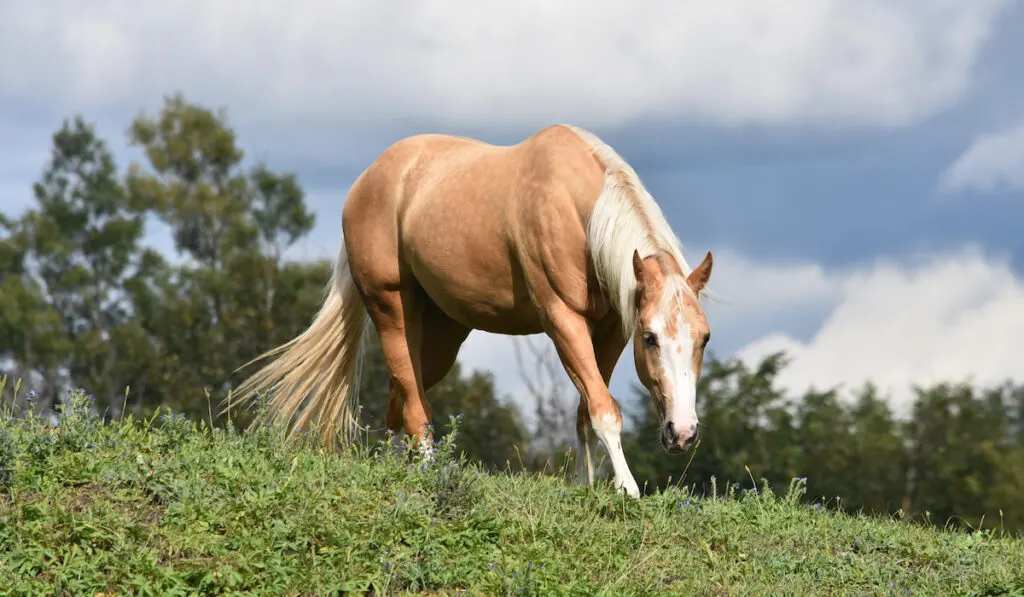
Table of Contents
1. Palomino is a Color Not a Breed
Yes, you probably have heard of Palominos referred to so separately that it would be only natural to assume that a Palomino is a specific breed, too.
But not so! While distinct, a Palomino is classified and identified by coat color – a sort of “color breed”, if you will, but not a genetic breed.
2. The Palomino Horse Association Accepts All Palomino Horses
There is no lineage that can be traced solely from color to color and a Palomino can be a horse of any traditional breed and even registered to the Palomino Horse Association Registry.
The only stipulations of coloring, aside from a golden coat (of varying accepted shades) is that a Palomino can only have white coloring on their faces or below their knees, in order to be registered as a true Palomino color breed.
So the next time you talk about Palomino horses, bear in mind that they can be of any breed. You are talking about coat color, not a pedigree.
3. If Pedigree Is Your Thing…
You need a horse registered with the Palomino Horse Breeders of America. This registry accepts any Palomino or Cremello horse who is already registered with a variety of different breed organizations.
The exception to this is that they will register geldings and spayed mares with any breeding including those with unknown parentage as long as they are the right color. (source)
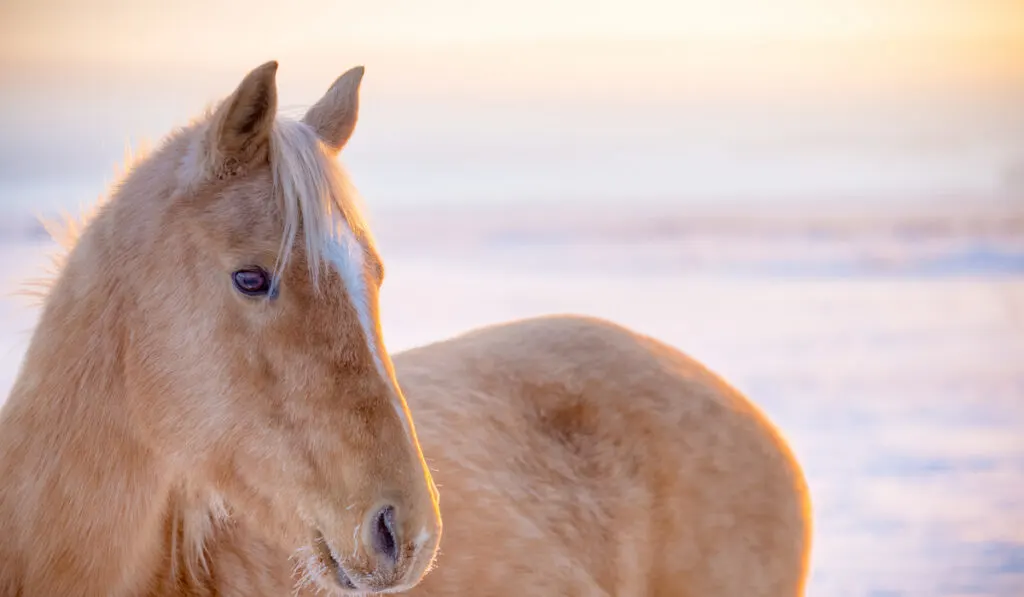
4. Palominos Are Believed to Have Descended from the Arab and the Barb
Though the exact origins and the record of the first official Palomino are a bit murky, most equine historians agree that they probably got their start thousands of years ago, genetically descending from the Arab and the Barb. In fact, golden horses of Palomino hue can be found in tapestries and paintings all over Europe and Asia from way back in time.
5. They Are Favored in Spain
However, the Palomino really got its start and official recognition in Spain, in the time of the Crusades.
They were even rumored to be the favorite horse of Queen Isabella, who kickstarted the Palomino’s American expansion by shipping a stallion and a handful of mares to Mexico. (source)
The name Palomino is a carryover from Spain, too. And, interestingly, there was once a Spanish breed known as the Golden Dorado, that was a genetic mix of Arabic, Moorish and Spanish blood.
This would have made it a quite literal true Palomino breed, as it possessed both the coloring and the familial lineage of the original Spanish stock of Moorish Barbs and Arabians.
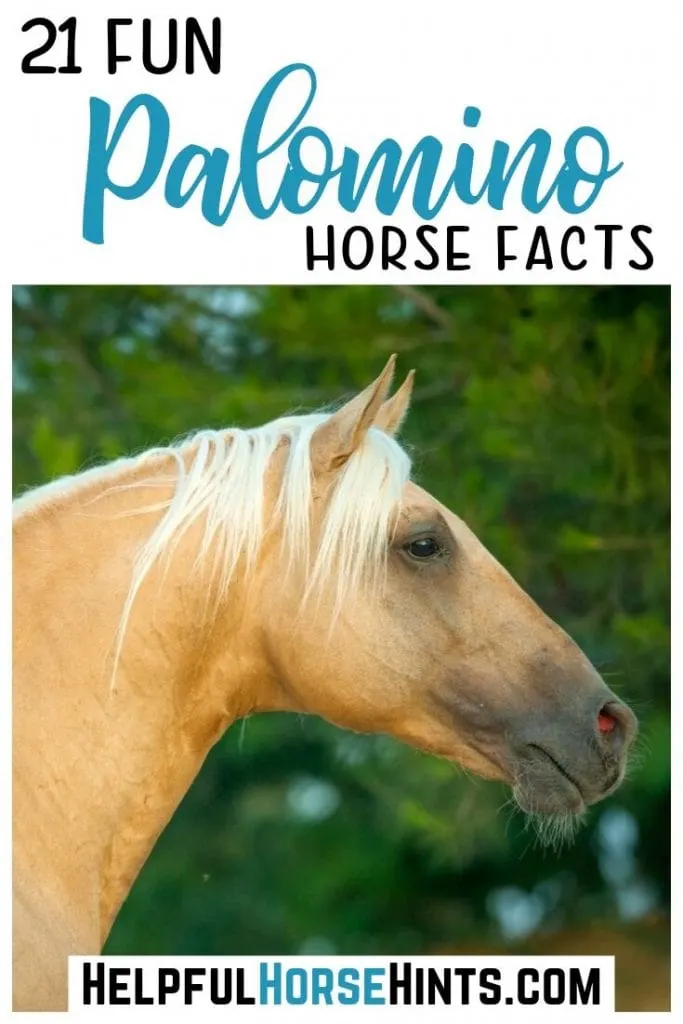
6. Palominos were Revered by Native Americans
Once at home in the so-called New World, these golden beauties migrated up into Texas and then on into California. They caught the eye of the Native Americans, who also revered their gold fur and began capturing and taming them to use as proud war horses, hunting mounts and transportation.
7. Palominos Can Be Found in a Variety of Shades
Palomino horses, while always golden-hued, can have that hue vary in tone and shade. (source) Their coats can be pale, creamy gold, a bright and brassy sunshine color, a deeper golden and more.
As long as the basic color is gold, there can be a rainbow of lightness and darkness. On any Palomino, their manes and tails are usually a beautifully contrasting white, but the hair can also be gold itself, too, or even contain some darker tones.
8. Some Palomino’s are “Sooty”
There is also something referred to as a “sooty gene”, which can affect coloring, making it darker, ashier and possessing dapples. This is a coloration variation that can also be found in chestnut horses.
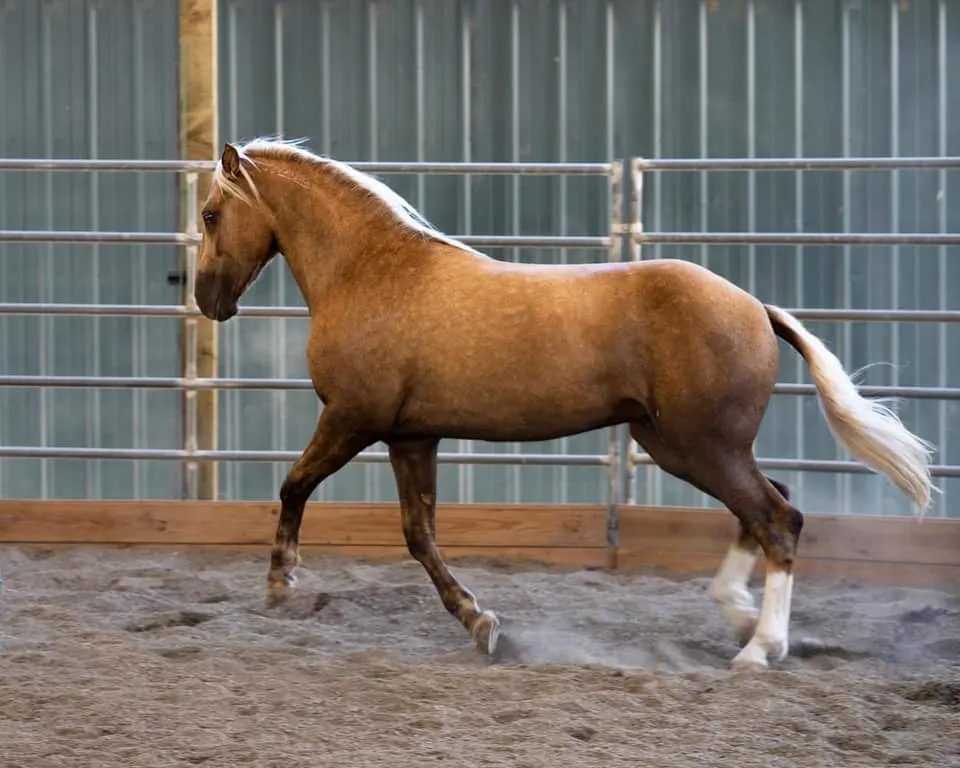
Sooty markings typically congregate around the points of a horse like their legs and knees but can extend into larger muscles as well.
In fact, a horse that is genetically palomino but has very pronounced sooty markings is referred to as a chocolate palomino.
9. Palominos Often Change Color Throughout the Year
Further, a Palomino’s coat may not always look the same through all four seasons. Just as blonde human hair is subject to lighten and darken with the sun, so, too, can a blonde horse coat develop highlights in the summer and be a darker gold in the winter.
The reverse is sometimes also true. A horse may be very dark gold in his summer coat but grow out a very light-colored winter coat.
Grain and hay also affect, to some extent, the lightness or darkness of a Palomino’s fur and so purposefully switching their feeds, as well as water sources, can give a person some control over coloring.
Hay and grain that is of a higher protein content have been proven to cause darker hairs or even patches of dappling. (source)
10. Some Palomino’s are Named for a Queen
Very pale Palominos are sometimes affectionately nickname “Isabellas”, after Queen Isabella who loved the coloring dearly.
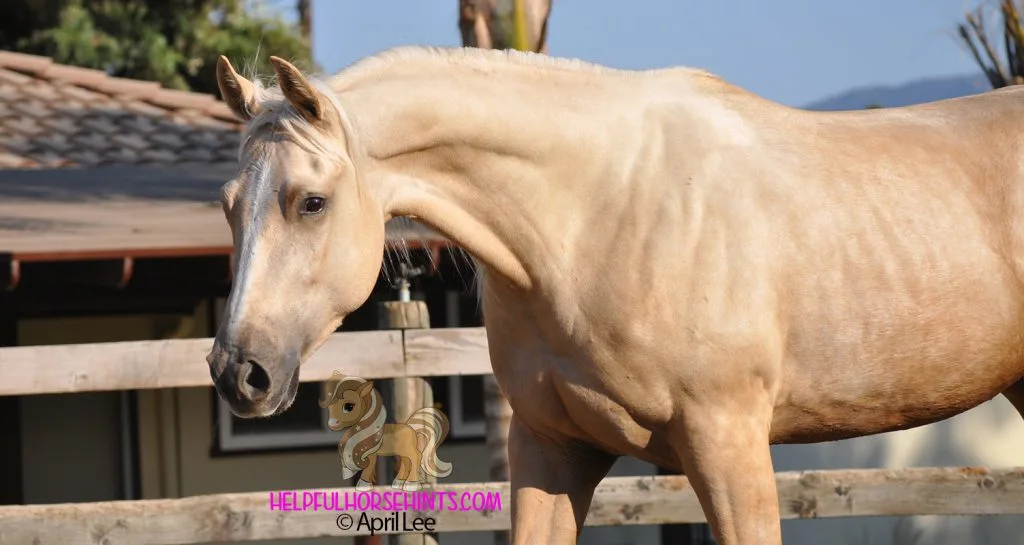
11. Pass the Chocolate (Palomino)
You may also run across something called a “chocolate palomino”, or, rather a horse that has a dark, chocolatey brown coat but a white, flaxen mane and tail.
While typically only golden coats are considered to be Palominos, these horses are genetically the same as regular palominos. The difference is in the expression of the gene.
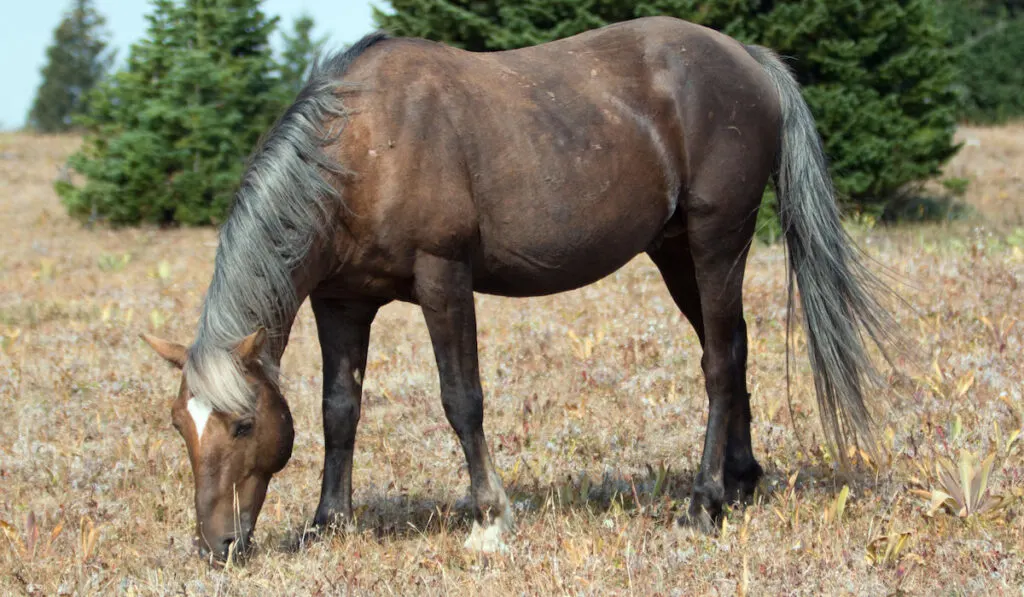
When most people think of a Palomino horse, they think of what is widely considered to be the “ideal” Palomino. This is a horse whose coloring is a pure golden colored horse, possessing no dapples, dark hairs or color variations, and having a white mane and tail.
There is no such stringent rule, however, to be registered as a Palomino or to participate in Palomino shows.
12. Not All Palominos Have White Manes
Say what? You can see the chocolate palomino above has a dark gray mane. This happens because of the sooty gene. But, palominos can have sooty manes with golden bodies. Take this guy for example.
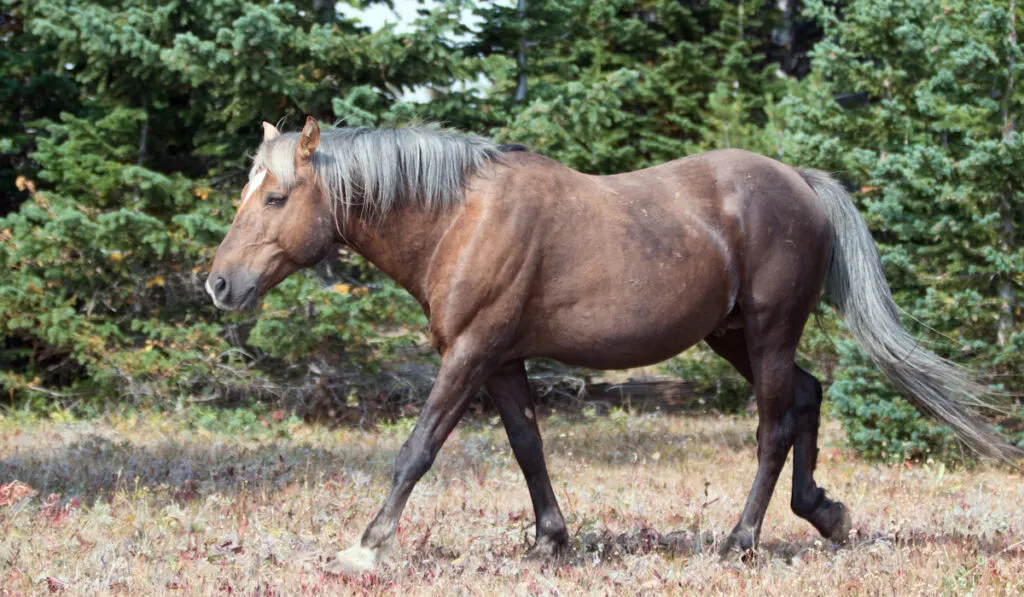
It is also possible for a chocolate palomino to have a very dark almost black coat while retaining the white mane and tail.
13. More Issues with Chocolate
Additionally, not all horses that LOOK like chocolate palominos. You see, there is this pesky silver dilution gene that can make a black or bay horse have a white or cream-colored mane and tail.
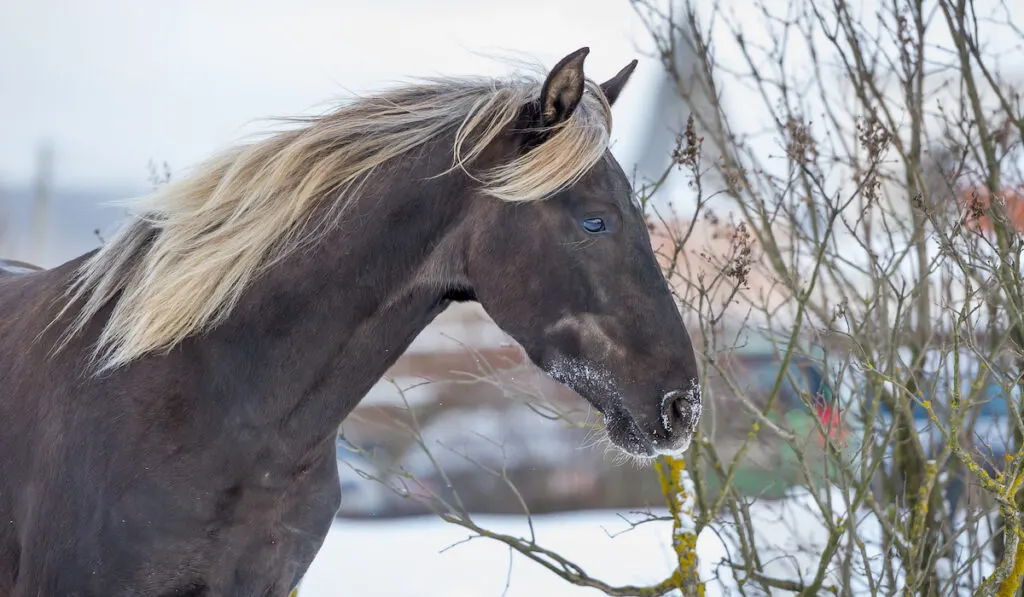
This color is particularly common in the Rocky Mountain breed but occurs in others as well. In this case, the horse looks like a deep chocolate palomino but, he doesn’t actually have the red base or cream gene required to be a palomino.
14. You Can Guarantee A Palomino Foal if You Carefully Choose the Sire and Dam
Since the palomino color is the result not of gene color itself but rather the suppression of one, this lack of color opens up genetic breeding possibilities that can allow people to breed specifically for the coat color.
If a cremello is bred to a chestnut, because of the dominant versus recessive genetics, there is a 100% chance of the resulting foal being a Palomino.
Breeding a Palomino to another Palomino, however, only has a 50% chance of resulting in another Palomino. The foal from this cross has a 25% chance of being chestnut and a 25% chance of being cremello.
15. Palomino Imposters
Some breeds of purebred horses don’t carry the cream gene at all yet have members that may appear Palomino to the naked eye. These horses are not actually Palomino – they have a chestnut coat that is more golden in color but do not carry the cream gene.
For example, Haflingers often appear to be Palomino but, they are actually genetically chestnut with white manes and tails, as the breed does not carry the gene for cream dilution of the Palomino.
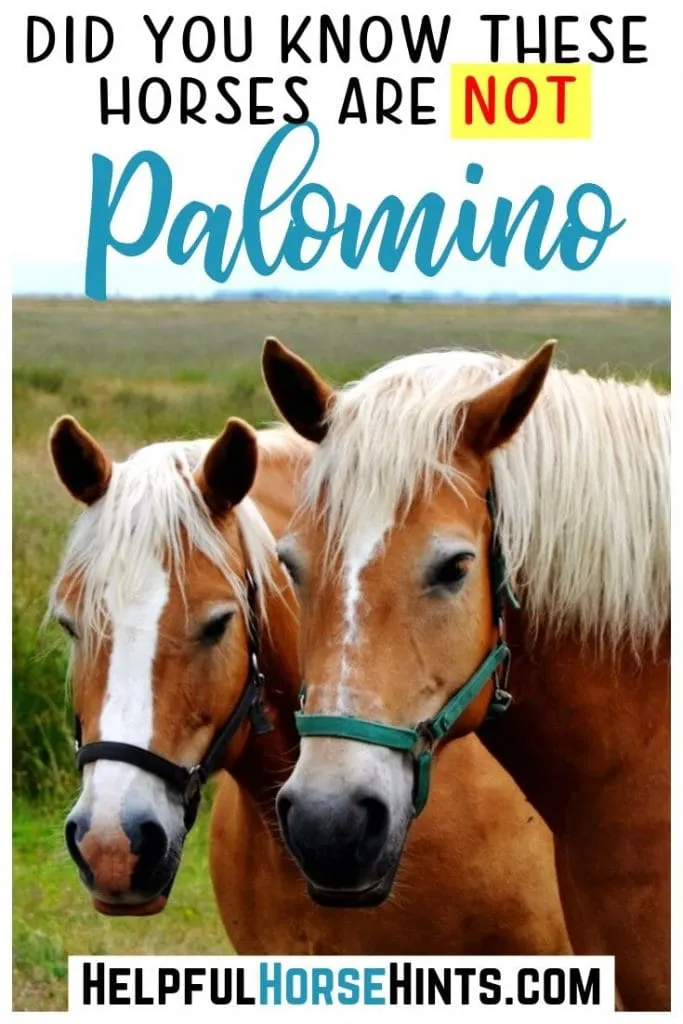
Similarly, sometimes a purebred Arabian is registered with the Palomino Horse Associations but the horse’s true color is chestnut with a Flaxen (white) mane and tail.
This is why a Palomino is often referred to as a color breed, since not only can any pedigree be a Palomino but also the qualifications for the coloring are specific to chromosomes.
The associations choose to register or exclude horses based on what color the horse looks like rather than what color it is genetically.
This means that any horse that looks close enough to a Palomino might be registered with one of the associations even if the genetics don’t match.
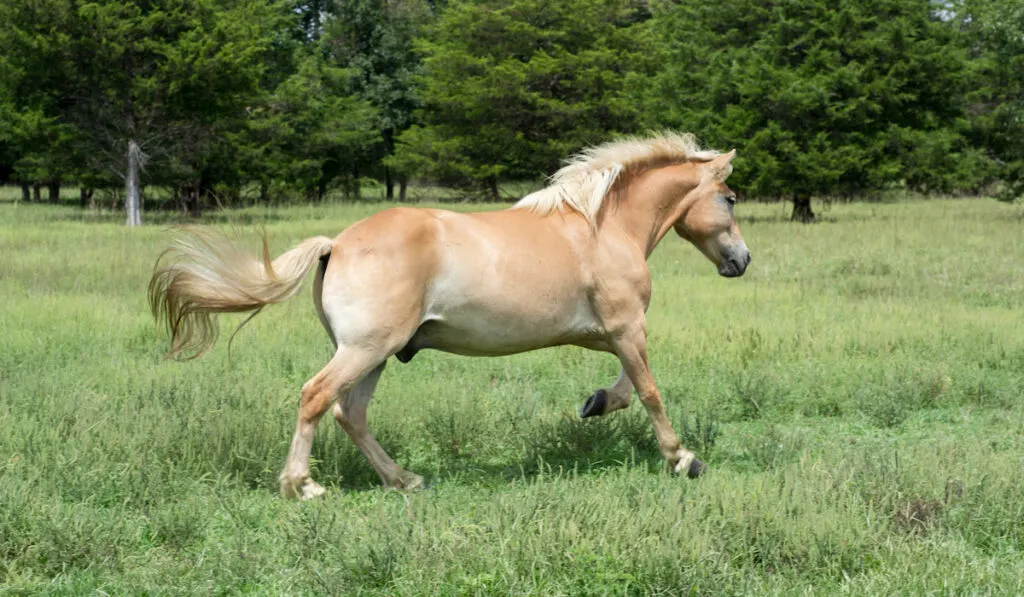
16. The Most Common Breed of Horse to Be Palomino Is the Quarter Horse
As we learned above, there is no one single breed that can be considered a Palomino, and horses of any stock can possibly breed a golden coated foal.
However, there is one breed of horse that seems to produce more Palominos than any other and makes up almost 50% of all registered Palominos: the Quarter Horse.
The other 50% is comprised of a variety of breeds, but especially Arabians, Standardbreds, Thoroughbreds, American Saddle Horses, Morgans, and Tennessee Walking Horses.
17. One of TV’s Most Famous Horses Was a Palomino
A horse is a horse, of course of course… And almost no horse is as memorable as television’s famous talking horse, Mr. Ed!
Mr. Ed was not only beloved for his funny one-liners and ability to talk, he stood out on TV thanks to his golden Palomino coat.
He locks were so brilliant, too, that the human lead, Alan Young, had to dye his own natural blonde hair brown so as not to blend in with Mr. Ed’s fur. (source)
While Ed himself was a true Palomino named Bamboo Harvester, his stunt double (yes, even acting horses have understudies and stunt doubles) was a registered Quarter Horse, affectionately known as Pumpkin. (source)
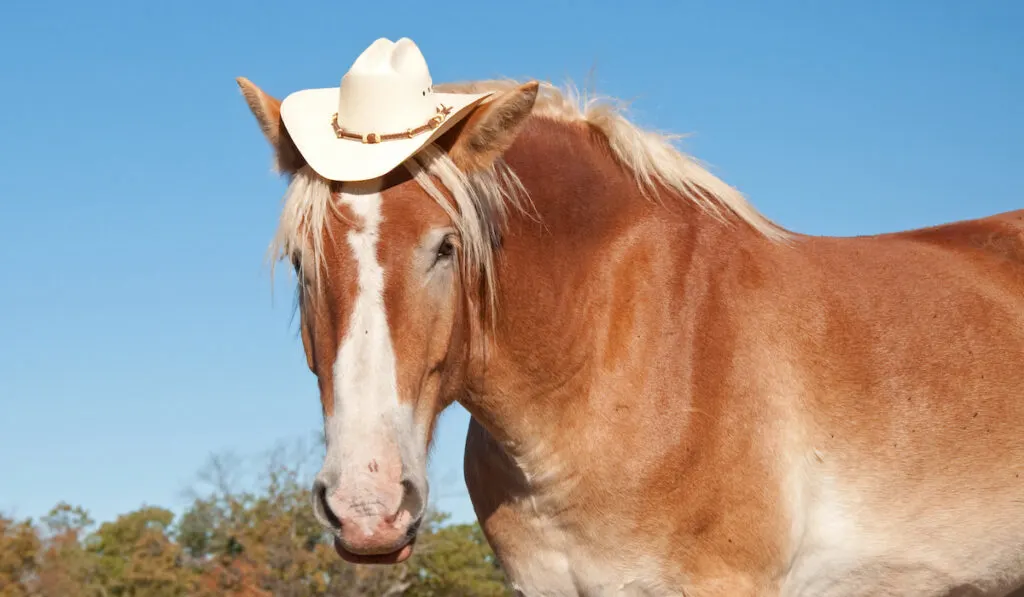
Bamboo Harvester was a Palomino with a very specific personality, too, and would only take direction from one certain trainer. Also, if he decided he was done for the day, he would simply walk off set and refuse to work any more!
Now, that behavior may get a human branded a diva, but for a recognizable and gorgeous Palomino, he could more easily get away with it. (
18. Speaking of Personality, Palominos Run the Gamut
All horses have unique personalities, but, since Palominos are a color and not a breed, there are no strong associations of one type of temperament.
When it comes to how a Palomino acts, reacts and presents itself, it is important to look beyond the color and focus on the breed. A golden coat does nothing to change an inherent temperament.
So, for example, a thoroughbred who is also a registered Palomino will most likely possess the higher strung and hot-blooded tendencies of that breed, whereas a Quarter Horse who is a Palomino will be more docile and relaxed.
One of the traits, though, that is seen time and again across the Palomino color breed is a curiosity and a willingness to please – an excitement to learn!
This makes Palominos not only sought out for their beauty but for their minds and spirits as well.
19. Registering a Palomino is Surprisingly Affordable
While many breed registries cost hundreds of dollars to join and relatively high annual fees, the Palomino registry does things a bit differently.
For only a $35 registration fee and around $30 a year in membership fees, a Palomino can join an official, FEI-recognized registry. Talk about a bargain! (source)
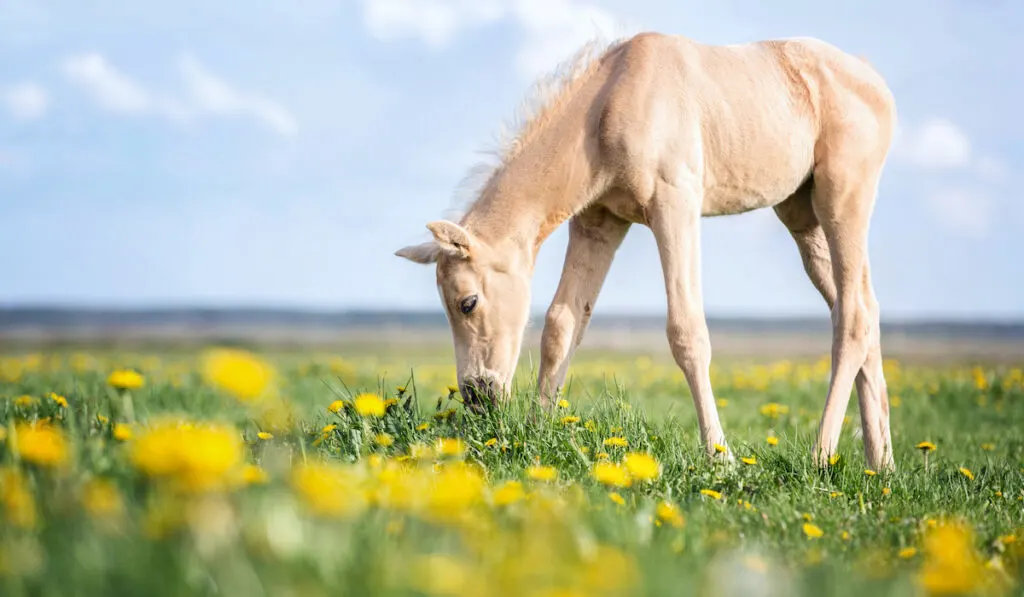
The original Palomino Horse Association registry (a family-run enterprise) is not much more expensive, either: a mere $45 secures the registration, with similar yearly fees.
A lifetime option can also be purchased for a small $250. When compared to other breed registries, these costs are quite minimal.
20. Easy to Groom – with One Possible Exception
The grooming requirements for a Palomino Horse are the same as for any other horse breed. Daily grooming is recommended to keep those golden coats both shiny and smooth, free of debris and loose hair, and growing healthily.
Just as with any other horse, a good medium-bristled brush (or stiff-bristled, if your horse is of coarser hair or has some caked-on dirt) is a perfect first step to rubbing off dirt and debris from the coat.
A smaller and softer brush should be used on the face and along the legs. If using a curry comb, remember to make small, consistent circular motions to scrape off the most dirt and keep your horse feeling comfortable.
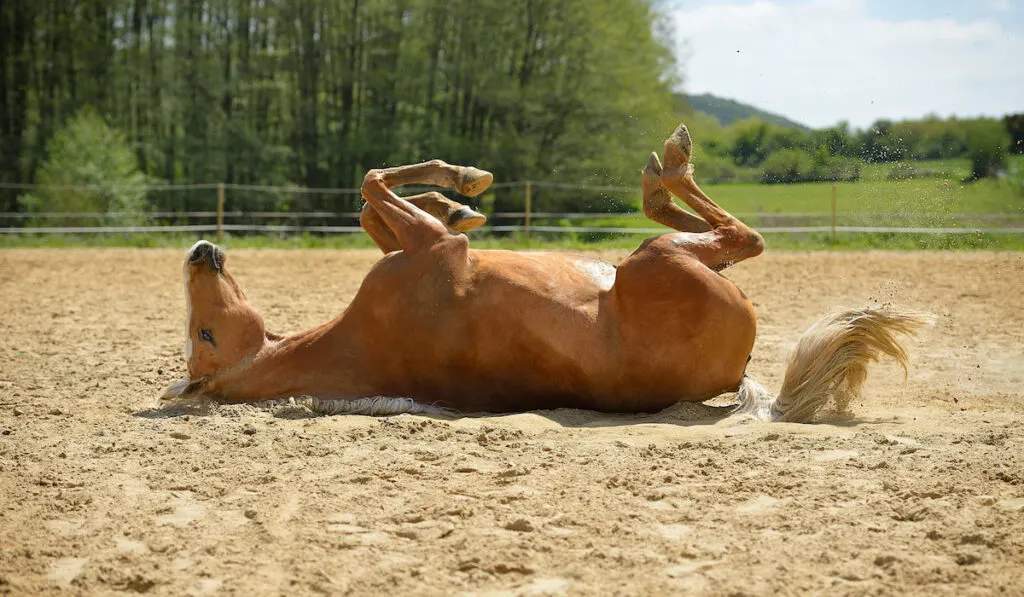
Palomino hooves, too, are just like any other horse’s hooves and should be cleaned free of rocks and mud with a hoof pick.
Brushing, shampooing and detangling the mane is not grooming that needs to be done every day, but should be kept up on a regular cadence. Though not necessary, many Palomino owners do work to preserve the lightness and brightness of a Palomino’s tail by using special whitening shampoo that is not only proven safe for horses but also lightens the hair.
You never want to use bleach or any other harmful chemicals, though, in any quest of a lighter mane or tail. In fact, if you have a Palomino (or any other horse with white hair), check out my guide to keeping horse whites…white!
20. Palomino Horses Can Be Used in Almost Any Discipline
Thanks to the genetic diversity of the color breed, Palominos are quite the pros in the multi-purpose arena. They can be speedy, they can be agile and they can also possess great endurance.
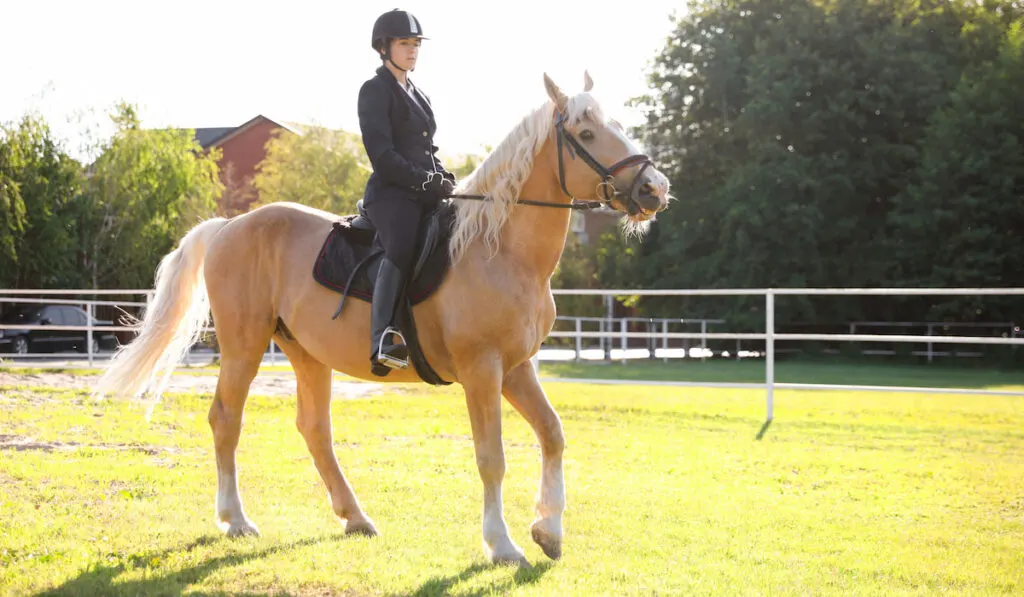
Because palomino horses have a wide array of talents, you will often find them in all kinds of shows, careers, and disciplines including rodeos, ranches, racing, trail riding, jumping and even being a loving pasture buddy. They also have a history of excelling in dressage, thanks in part to their beautiful coat, movements and overall aesthetic appeal.
Final Thoughts
I hope this article has been able to provide you some general information about the Palomino horse. They really are extraordinarily beautiful. Ranging in size from miniature horses all the way to draft horses, if you want a Palomino, you’ll be able to find one that fits your needs!
In fact, I did a whole breed profile on the Palomino horse that includes breeds, genetics and more awesome information. Now that you’ve learned some palomino horse facts, be sure to check out my list of palomino horse names that are perfect for these golden beauties!
Resources:
- https://www.palominohorseassoc.com/history


